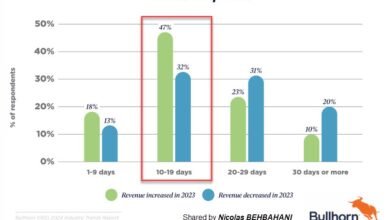
By | John Preston
Market research is, therefore, the administrative tool that uses scientific and practical means with the aim of providing information to the company that improves the decision-making process. To do this, it takes advantage of statistics and data analysis. Basically, it is a method of obtaining information that uses means such as the telephone, the mail, direct observation or personal interviews. Thanks to these analyses, companies can learn specific situations with some objectivity, such as the reaction of consumers to the launch of a new product.
Are you running or creating a company, and questions are arising about the strategy to adopt to approach the market in the most effective way possible? Market research is the ideal way to answer these questions. But where to start?
Perhaps you are asking yourself one of the following questions: “What offer should I put on the market to satisfy my customers? What is the best distribution channel to reach them? How to communicate with them? As for your (future) competitors, you can ask yourself: “Who are they? How do they work? What position should I adopt to find my place among them effectively?
Therefore, you are looking for information about your market, and you think it makes sense to start with desk research. This technique will give you the first idea of your market “from your desk”, but it is only a metaphor.
In this article, we walk you through this process in 4 steps:
- Define the objective of your investigation
- Define your research plan
- Do the research
- Complete and verify the information
Step 1: Define the goal of your research
To search well, you have to know what you are looking for. This may seem elementary, but it is essential to precisely define all the questions you are trying to answer.
For example, if a Belgian baker wants to offer bread made with an alternative flour, his main question will probably be “Which flour should he ideally use?” However, there are several factors that come into play to determine the ideal flour for this artisan, starting with the accessibility of the flour, its price, its ease of use and, above all, how much consumers like it through For example, the flavor and texture it brings to the bread.
To be effective, the baker will therefore need to break down his research into several specific questions, such as:
- What alternative flours are there in Belgium?
- Which of these flours are affordable?
- Among the remaining options, which flours are easy to use?
- Among the remaining options, which flours are likely to taste good?
- What alternative flours are currently used by bakers in Belgium?
- and so on.
The order in which the investigation is carried out is significant in a case such as this, and must in all cases follow a certain logic. The main rule is to go from the most general to the most precise. In the case of our baker, for example, it would not make sense to search for affordable alternative flours before eliminating those that are not available in Belgium. To illustrate with another example, a project manager who wants to better understand the context and constraints of their market should start by “taking stock” before investigating specific elements of this context.
When defining your research questions, keep in mind that the information collected should ultimately be useful to you and that it is best to avoid searching too broadly, even if it means further research.
If you are conducting your research wholly or partly via the web (something almost impossible to avoid) and if it involves using a search engine, the identified questions should be translated into keywords. When building your keyword list, remember to keep in mind their main synonyms, which can, in some cases, open many more doors for you than the words you initially anticipated.
If your research aims to collect very detailed information, such as a list of potential partners, define the data you need to collect about each of them. For example, address, sector of activity, specialization, data of the contact person, etc.
Finally, have a relatively accurate idea of the amount of information you are looking for. You’ll be more efficient and have better insight into your progress throughout the process.
Step 2: Define your research plan
Specifying your objective was a first (big) step towards the success of your desk research. To complete the preparation phase, you now have to focus on the method of investigation that you are going to use, especially regarding the tools or supports.
As mentioned above (see step 1), the main search channel for documentary research is the web, but of course it is not the only one. Thus, it can sometimes be useful to refer to the bibliography or to theses, dissertations and research reports written by students (accessible, in particular, through Google Scholar) for detailed information, for example, if it is a scientific project .
In your sources, do not neglect the official and sectoral organizations, which can provide you with free and updated information at a regional, national and sometimes even international level. In Belgium, there are federations of companies for almost all sectors of activity, as well as movements, events and salons that can bring together a large number of companies “under one roof”.
Be resourceful and take advantage of all the means at your disposal to obtain the information you are looking for using the shortest path. In some cases, however, it will be necessary to carry out a tedious investigation based mainly on Google searches. In that case, you may well end up finding a “choice” source, that is, a website full of useful information.
If Google doesn’t lead you down this path, or if you want to improve your efficiency, don’t be afraid to ask for help from around you, from your network, or from public services or state agencies. Think of the Belgian business network as one big community, some of whose members will be able to help you and others who will refer you to those who can help you out. Of course, there are also members who cannot do anything for you.
Have a relatively clear idea of the order in which you are going to do things. If it is a long-term investigation, why not establish a procedure, that is, an ordered list of the investigative tasks that you are going to carry out?
Step 3: Conduct the research
There you have it, you know what you have to do: there’s only one thing left to do. Yes, but how do we collect data and information on a practical level?
As long as your search is consistent with your plan and you come across the collected information, you’re on the right track.
Depending on the nature and duration of the search, it can sometimes be useful to set up an “auto follow” on Google or other search engines to be notified of the availability of new information on the subject you are studying.
Step 4: Conclude and verify the information
Once you are satisfied that you have obtained enough information to simplify your strategic choices, you still have to do a few more checks:
- Make sure you understand the information collected. It is only of interest if you fully understand it.
- If, despite your best efforts, some points are still not clear and will create a blockage for you, call an expert to explain them to you. Keep your request as short and to the point as possible, as experts don’t have a lot of time, especially for free advice, and they will be rewarded for being able to express themselves on specific points.
At the end of these 4 steps and whatever the topic of the research carried out, you will undoubtedly have taken an important step in understanding your market and will have more useful knowledge to make the right decisions for the company. In conclusion, if there was only one rule to keep in mind when carrying out this type of investigation, it would be to use common sense.






